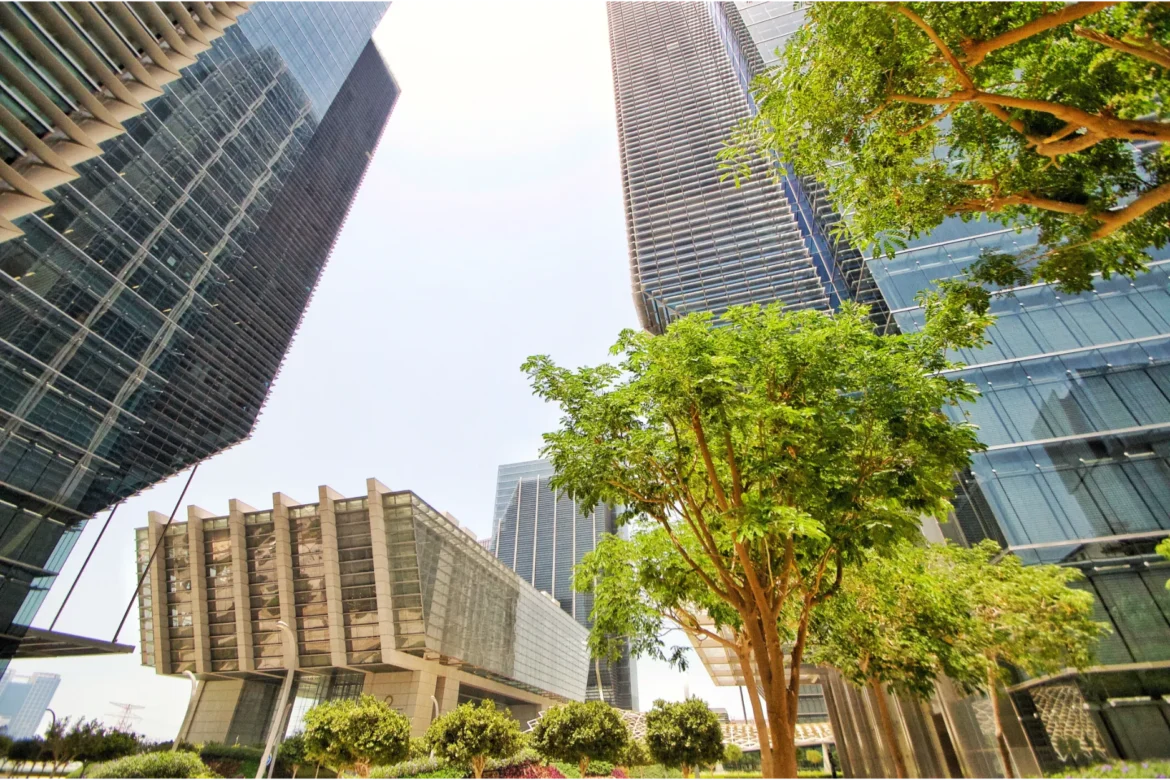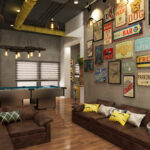Create Sustainable Structures With 3D Design: Blueprints for A Greener Earth
Overview
Explore sustainable architecture’s future with 3D design innovation. From blueprints to reality, witness the green revolution in modern living spaces.
Venture into the dynamic convergence of innovation and sustainability, where the future blueprint unfolds through the dynamic strokes of 3D design. In the domain of architecture, the fusion of 3D design and sustainability stands as a formidable influence, revolutionizing the conception, construction, and habitation of structures.
This exploration delves into the transformative impact of 3D design on sustainable architecture—an arena that resonates not only with architects and design professionals but also with homeowners seeking environmentally conscious living spaces.
In recent times, the resonance of 3D design has transcended the realms of entertainment and gaming, extending its influence into the core of sustainable construction. Envision architects utilizing virtual reality (VR) and augmented reality (AR) not only for visualizing designs but also seamlessly incorporating sustainable practices into every facet of their creations. The outcome is a seamless fusion of aesthetics and environmental consciousness that extends beyond traditional architectural boundaries.
The significance, you may inquire? The construction industry ranks among the largest contributors to environmental degradation. Amidst the challenges of climate change and resource depletion, the imperative of sustainable practices in construction cannot be overstated—it’s not merely a passing trend; it’s an absolute necessity. From curbing carbon footprints to minimizing waste, sustainable architecture addresses the urgent issues of our era, charting a course for a greener and more resilient future.
Our journey revolves around a compelling thesis: how 3D design acts as a catalyst in elevating the sustainability quotient of architectural pursuits. Envision an interior design professional conceiving a space not only for its aesthetic allure but also for prioritizing energy efficiency. Picture a homeowner dreaming of a dwelling that mirrors their style while leaving a light ecological footprint.
Through concrete examples and tangible benefits, we unravel the symbiotic relationship between 3D design and sustainable architecture, demonstrating that the future of design is not just visually striking but also environmentally conscious. Join us in exploring how 3D design transcends being a mere tool, emerging as a visionary accomplice in constructing a sustainable tomorrow.
Sustainable Architecture

Definition And Core Principles Of Sustainable Architecture
At its essence, sustainable architecture revolves around constructing buildings that cater to current needs without jeopardizing the ability of future generations to meet their own. It embodies a comprehensive perspective, striving to establish equilibrium between the constructed environment and the natural world.
Core principles encompass resource efficiency, energy conservation, and environmental responsibility. Picture a residence strategically designed to optimize natural light, diminishing the reliance on artificial lighting. This not only reduces energy consumption but also crafts a visually appealing space—a dual victory for sustainability and interior design.
The Transformative Journey Of Sustainable Design In Construction
The trajectory of sustainable design has transitioned from a niche idea to a vital mainstream necessity. Initially sparked by heightened environmental awareness, it has matured into a response to global challenges like climate change. In the construction sector, this transformation is defined by a transition from traditional methodologies to pioneering, environmentally conscious approaches.
The ascendance of 3D design tools has redefined how architects conceptualize sustainable structures. Now, they can simulate the environmental impact of their designs, optimizing energy efficiency and material usage even before the first brick is laid.
Navigating Challenges And Embracing Opportunities In Sustainable Practices
The implementation of sustainable practices presents a landscape filled with challenges and exciting opportunities. Hurdles may include initial costs and the imperative for industry-wide adoption. However, the potential benefits are extensive, spanning from cost savings throughout a building’s lifecycle to the opportunity to lead a movement that values eco-conscious decisions.
Integrating sustainable practices may demand an upfront investment, but the enduring benefits are apparent. For instance, the use of recycled materials not only lessens environmental impact but also elevates the aesthetics of a space—an integral consideration in interior design.
In summary, a comprehensive understanding of sustainable architecture involves not only grasping its fundamental principles but also acknowledging its evolution within the construction industry. Navigating through the challenges and embracing the opportunities sets the stage for appreciating the pivotal role 3D design plays in advancing these principles. This knowledge forms the bedrock for recognizing how 3D design ensures a seamless fusion of sustainability and cutting-edge design innovation.
The Impact Of 3D Design On Architectural Sustainability
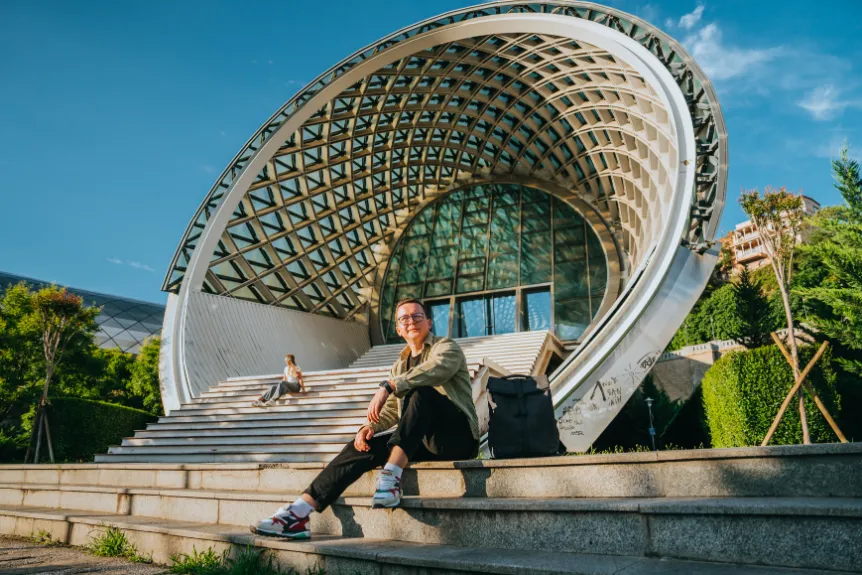
Introduction to 3D Design Technologies in Architecture
In the dynamic realm of architecture, the infusion of 3D design technologies has ushered in a transformative era. Unlike the static blueprints of yesteryears, 3D design tools have become the architects’ palette, enabling them to sculpt, refine, and bring their sustainable visions to life with unprecedented precision.
These technologies go beyond mere representation; they immerse architects and interior design professionals in a world of three-dimensional possibilities. From Computer-Aided Design (CAD) software to the intricate capabilities of Building Information Modeling (BIM) platforms, 3D design offers a holistic view of spaces. This depth allows architects to not only conceptualize the aesthetics but to intricately weave sustainability into the very fabric of their designs.
Virtual Reality And Augmented Reality
Explore the applications of Virtual Reality (VR) and Augmented Reality (AR) in sustainable architecture, delving into a transformative evolution within these immersive technologies. VR beckons architects into a virtual realm, offering them the opportunity to stroll through spaces that solely exist in the digital domain. This immersive encounter is revolutionary, enabling architects to experience the influence of their designs on both interior and exterior environments firsthand.
On the other hand, AR overlays digital information onto the physical world, creating a symbiosis between the envisioned and the existing. Imagine donning AR glasses to see how solar panels seamlessly integrate into the structure, or how recycled materials harmonize with the surroundings. These applications of VR and AR not only enhance the design process but also provide a tangible preview of how sustainability can coalesce with the real world. Let’s explore tangible examples where 3D design has been a silent but powerful partner in crafting sustainable architectural marvels.
The Edge, Amsterdam
Situated in Amsterdam, The Edge stands as a beacon of sustainable office design. 3D design, particularly the use of BIM, played a pivotal role in optimizing the building’s layout for energy efficiency. The result? A workspace that not only minimizes its ecological footprint but also boasts an interior design that fosters productivity and well-being.
One Central Park, Sydney
In the heart of Sydney, One Central Park emerges as a testament to the fusion of nature and architecture. The 3D design was instrumental in envisioning the building’s iconic green façade and integrating solar panels seamlessly into its design. The outcome is not just a structurally efficient building but a harmonious blend of sustainable living and breathtaking design.
These case studies illuminate the tangible impact of 3D design on sustainable architecture. The ability to simulate and optimize designs before construction begins minimizes wastage and enhances efficiency. It’s not just about creating visually appealing spaces; it’s about crafting environments that stand as testaments to eco-conscious living.
In essence, the integration of 3D design technologies into sustainable architecture isn’t a mere upgrade—it’s a paradigm shift. It empowers architects and interior design professionals to marry aesthetics with environmental responsibility seamlessly. As we navigate the possibilities of 3D design, it becomes clear that it isn’t just a tool but a visionary ally, propelling us towards a sustainable future where architecture is seen, experienced, felt, and embraced.
Energy Efficiency And 3D Design

Optimizing Building Performance Through 3D Simulations
In the pursuit of sustainable architecture, the fusion of energy efficiency and 3D design emerges as a formidable force. 3D simulations serve as a virtual playground for architects, enabling them to refine and enhance building performance in the digital realm before any physical construction begins. These simulations create scenarios that allow architects to evaluate how different design elements impact energy consumption, lighting, and overall functionality.
Imagine an architect using 3D simulations to assess the building’s orientation concerning the sun’s path throughout the day. Virtually adjusting angles and dimensions, they can pinpoint the most energy-efficient layout, reducing the reliance on artificial lighting and lessening the overall environmental impact.
Importance Of Accurate Energy Modeling In Sustainable Architecture
Accurate energy modeling stands as a cornerstone in sustainable architecture, and 3D design plays a pivotal role in ensuring precision. Energy modeling involves crafting a virtual representation of a building’s energy usage, providing architects with insights to predict and optimize its performance. This process is crucial in identifying potential inefficiencies and implementing design adjustments to enhance overall sustainability.
Visualize an architect using 3D energy modeling to analyze the thermal performance of a structure. By virtually testing different insulation materials and configurations, they can pinpoint the most energy-efficient solution, ensuring the building retains heat in winter and remains cool in summer. This precision in energy modeling is instrumental in achieving optimal performance while minimizing environmental impact. Let’s delve into tangible examples where 3D design has been the driving force behind creating energy-efficient architectural marvels.
The Crystal, London
Nestled in London, The Crystal stands as a symbol of sustainable design. Extensive use of 3D simulations optimized its energy performance. The building incorporates features such as solar panels, rainwater harvesting, and energy-efficient lighting—all fine-tuned through 3D simulations to achieve maximum efficiency.
Bosco Verticale, Milan
The Bosco Verticale, or Vertical Forest, in Milan, is a testament to marrying sustainability with aesthetic innovation. 3D design played a crucial role in conceptualizing the towers’ lush greenery, ensuring that the vegetation not only enhances visual appeal but also contributes to insulation, reducing the need for heating and cooling. These real-world examples underscore the tangible benefits of integrating 3D design into sustainable architecture. The capacity to simulate and optimize energy performance results in buildings that not only meet but surpass energy efficiency standards.
Waste Reduction And Material Efficiency
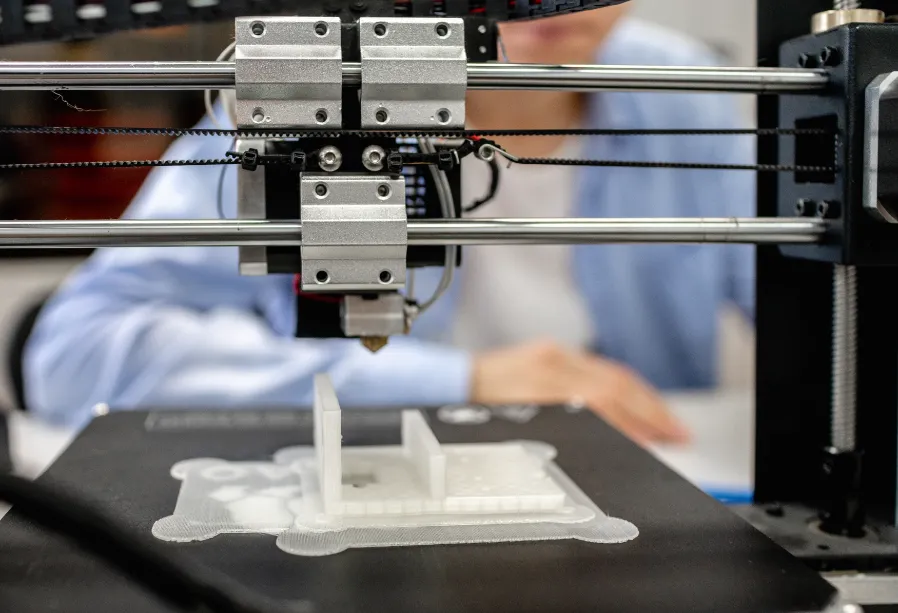
The Role Of 3D Printing In Reducing Construction Waste
In the pursuit of sustainable architecture, the advent of 3D printing emerges as a groundbreaking solution to address the perennial challenge of construction waste. Traditional construction methods often lead to excessive material usage and generate significant waste. Enter 3D printing—a technology that promises not just efficiency but a substantial reduction in construction-related waste.
Imagine a scenario where complex building components are precisely crafted layer by layer, eliminating the need for excess material. This is the promise of 3D printing in construction. By intricately depositing material only where needed, this technology minimizes waste and contributes to a more sustainable building process.
Efficient Material Usage Through 3D Design And Modeling
Efficient material usage lies at the core of sustainable architecture, and 3D design and modeling play a pivotal role in achieving this goal. Unlike traditional 2D blueprints, 3D design allows architects to visualize the entire structure in detail, enabling them to make informed decisions about material usage. This visual precision not only reduces the likelihood of overordering materials but also ensures that every component serves a purpose in enhancing both structural integrity and sustainability.
Imagine an architect employing 3D modeling to enhance the design of a prefabricated wall, aiming to achieve optimal efficiency and sustainability. Through virtual simulations, they can assess the exact dimensions and material requirements, streamlining the manufacturing process and minimizing waste. This level of precision is a game-changer in the quest for sustainable construction practices.
Eco-Friendly Materials And Their Integration Into 3D-Designed Sustainable Structures
The journey towards sustainability extends beyond efficient usage to the materials themselves. Integrating eco-friendly materials into 3D-designed structures represents a conscious effort to reduce environmental impact. From recycled plastics to sustainable wood alternatives, architects now have a plethora of options that align with both 3D design capabilities and sustainability objectives.
Adidas Futurecraft Loop
While not a building, the Adidas Futurecraft Loop sneaker serves as an exemplary illustration of sustainable 3D design. Crafted using a single material, this shoe is not only fully recyclable but is also produced with minimal waste. The design principles applied in creating this sneaker can be extrapolated to architectural practices, showcasing the potential of 3D design in minimizing waste and promoting sustainability.
Resilience And Adaptability In Architecture
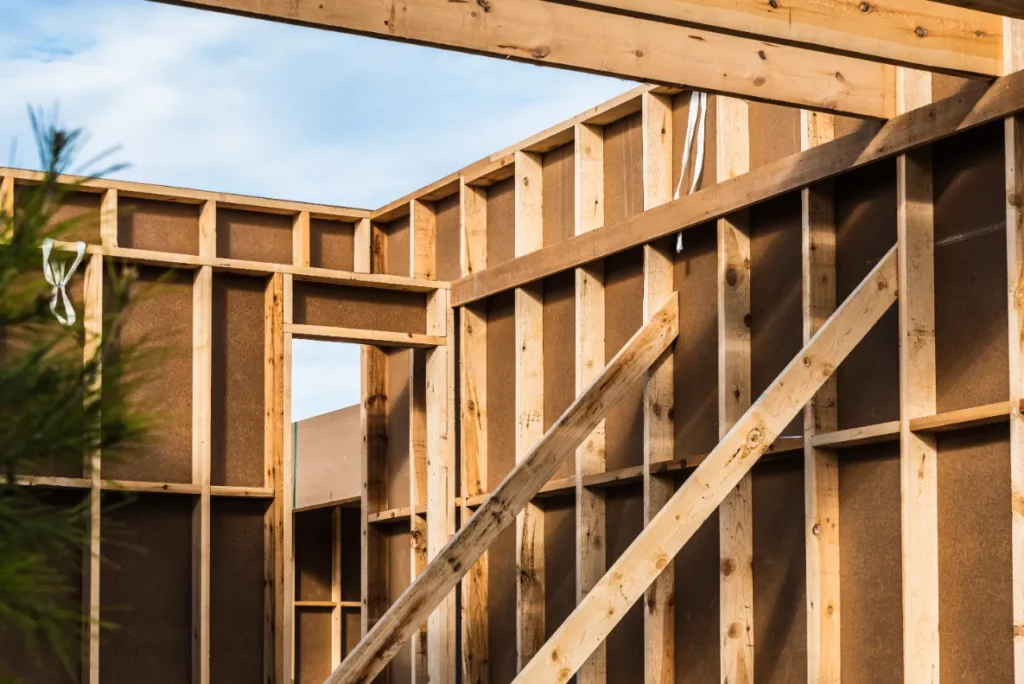
Designing For Resilience Amidst Climate Change Using 3D Tools
In this era of climate change, architecture transcends mere aesthetics, becoming a cornerstone for resilience. 3D design tools play a pivotal role in conceiving structures that can confront the challenges presented by a shifting climate. Architects leverage these tools to simulate and analyze the potential impacts of extreme weather events, shaping designs that not only captivate visually but also stand resilient in the face of adversity.
Implementing Adaptive Design Principles Through 3D Modeling
Adaptive design principles, essential for navigating the uncertainties of the future, find a stalwart ally in 3D modeling. Architects harness these tools to craft designs that are supple and responsive to changing environmental conditions. For instance, the capability to virtually test and refine a building’s response to diverse climate scenarios ensures adaptability to unforeseen challenges, fostering both longevity and sustainability.
Buildings That Endure Environmental Challenges With 3D-Designed Features
Real-world instances abound where 3D-designed features have fortified buildings against environmental challenges.
The Pearl River Tower, Guangzhou
The Pearl River Tower in Guangzhou, China, stands tall as a tribute to resilience in design. 3D tools played a pivotal role in optimizing the tower’s aerodynamics, enabling it to harness wind energy for power. This innovative approach not only underscores the adaptability of 3D design but also positions the building as a resilient structure amidst evolving weather patterns.
In the pursuit of resilience and adaptability, architects increasingly rely on 3D design tools as indispensable companions. As climate uncertainties persist, the integration of these tools ensures that the structures we erect today can withstand the storms of tomorrow, embodying not only architectural excellence but also a commitment to a resilient and sustainable future.
Conclusion
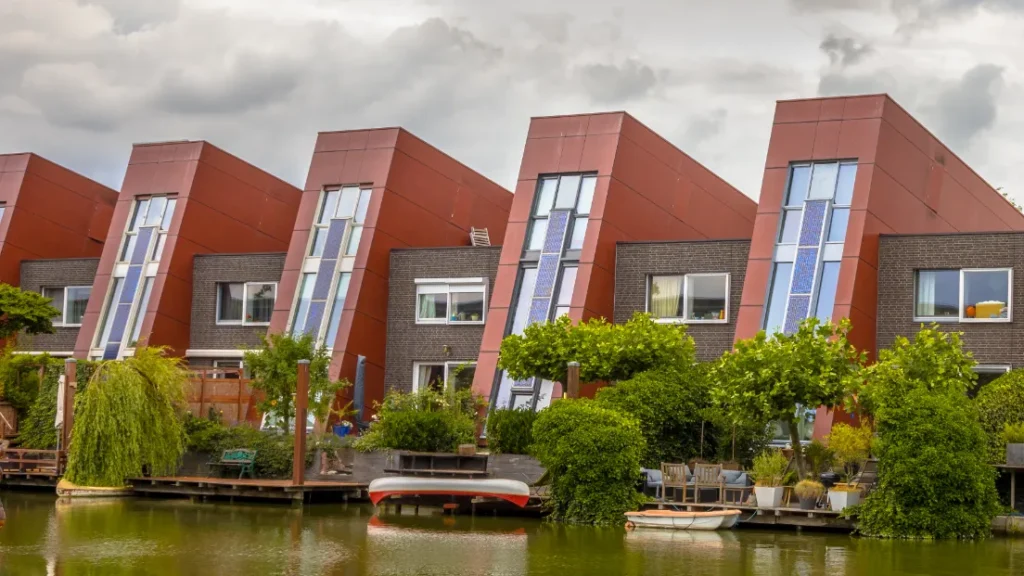
In the dynamic realm of architecture, the fusion with 3D design emerges not just as a technological progression but as a revolutionary catalyst propelling the industry towards a sustainable horizon. Architects and interior design professionals, navigating the intricate tapestry of their discipline, now find 3D design technologies indispensable, offering innovative solutions to enduring challenges.
This exploration’s trajectory underscores the profound impact of 3D design on shaping sustainable architecture. From the initial stages of conceptualization to the meticulous refinement of details, 3D design tools empower architects to craft structures that captivate not only visually but also embody environmental responsibility. The convergence of 3D design, sustainability, and architecture creates a harmonious symphony where each note resonates with the urgency of our era.
As architects leverage 3D design to optimize building performance, enhance energy efficiency, and minimize waste, they transcend the adoption of a mere trend; they champion an imperative. The fine-tuning of energy consumption through 3D simulations, the reduction of construction waste through 3D printing, and the adaptation of designs to climate change all echo the industry’s dedication to a greener, more sustainable trajectory.
Concrete examples like The Edge in Amsterdam, One Central Park in Sydney, and The Crystal in London stand as tangible proof of 3D design’s impact on sustainable architecture. These buildings not only showcase the visual allure of inventive design but also embody principles of resource efficiency, energy conservation, and environmental responsibility.
In conclusion, the fusion of 3D design and sustainable architecture transcends traditional construction boundaries. It is a visionary partnership that not only envisions structures but foresees a future where architecture seamlessly harmonizes with the planet. As architects and design professionals continually stretch the boundaries of innovation, 3D design remains at the forefront—an imaginative ally in constructing a sustainable tomorrow.
At The White Frame, we turn extravagant dreams into functional, well-crafted realities. We handcraft luxurious homes, tailored to the preferences of our diverse clientele in Gurgaon, Noida, and Delhi-NCR. We’re redefining the notion of modern opulence, proving that luxury doesn’t have to strain the budget. We’re driven by a core belief that our in-house technology (Twinn) streamlines processes, making the journey to your dream home effortless and trouble-free. Our team of interior designers is well-versed in optimizing space and crafting functional, aesthetically pleasing interiors that exude class, sophistication, and beauty.
Explore some of our work here and Get in Touch with us Today!


